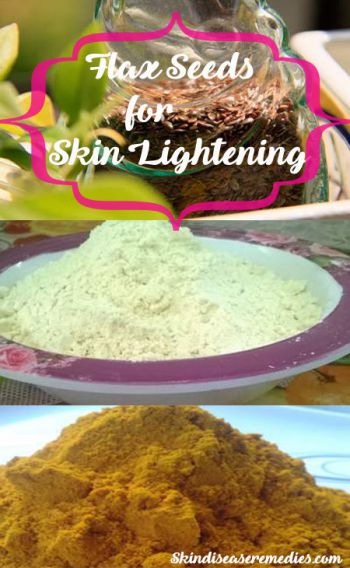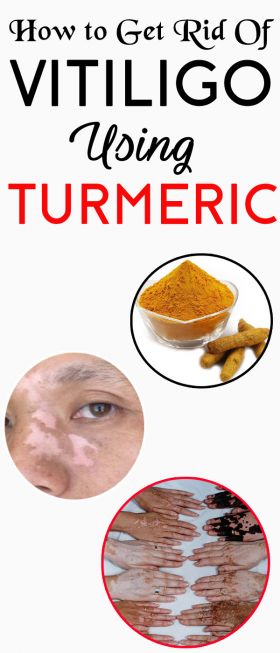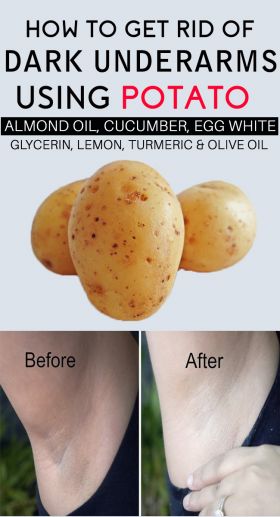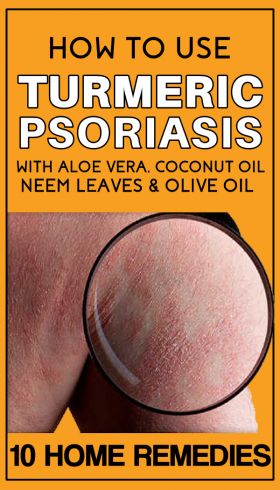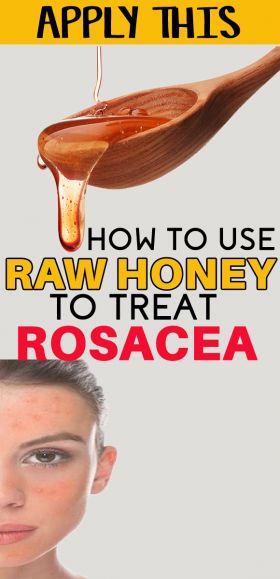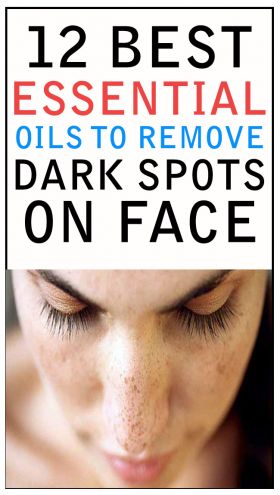
Your body is undoubtedly the most precious treasure you have. You would always want to have the healthy, fit and fine body, so that you can enjoy your life to the fullest. If we talk about the look and beauty of the body, skin is perhaps one of the most important parts of our body.
In addition to protecting our body from different harmful elements, the skin also gives our body a very attractive and beautiful look. You can’t even imagine a human body without skin. Different types of skin colors can be seen in different parts of the world thanks to different types of climates, regions, diets, lifestyles etc.
Every skin color is special in a way, but due to different types of factors, most of the human population is being affected with some types of skin related problems. Pigmentation is the continuous process which is responsible for the coloring of the skin.
In this article, we are going to confabulate about the essential oils for hyperpigmentation. With a proper and detailed discussion, we are going to learn about hyperpigmentation, what are the causes of hyperpigmentation, why essential oils are very effective in case of hyperpigmentation.
We will thoroughly discuss the properties and benefits of different essential oils. We are also going to talk about different recipes prepared with different essential oils. Not least of all, we will also highlight some important tips to use essential oils differently and more effectively. Let’s start with hyperpigmentation and its causes.
Related Post: 10 Best Essential Oils to Remove Moles
What Causes Hyperpigmentation?
As we have already talked about what is hyperpigmentation, let’s come to the causes of hyperpigmentation. From genetics to diet, lifestyle, different diseases and reaction of different medicinal products, there are loads of very common causes of hyperpigmentation. Let’s find out some of the very prominent causes of hyperpigmentation.
Sunlight
Sunlight is perhaps one of the most common causes of hyperpigmentation. When your body is exposed to the UV rays of the sun, your skin immediately produces the defensive inflammatory response. The response is of a very lower level and generally goes unnoticed.
Due to prolonged exposure to sun, the level of inflammation increases and your body starts producing inflammatory mediators. Inflammatory mediators cause different types of skin reactions including overproduction of melanin, and in a result, hyperpigmentation.
Skin Damage Due to Different Reasons
A simple cut, or even a little pimple can damage your skin. When any type of skin damage occurs due to any reason, your skin starts producing an inflammatory response. This response again causes the unwanted production of melanocytes and hence causes hyperpigmentation.
Allergic Reactions
Different people have allergies to different types of things like dust, sand, cotton pieces, smoke, spices etc. If your skin is highly allergic to anything and you are repeatedly in contact with it, your skin once again produces the inflammatory responses and it can also be a cause of hyperpigmentation.
Medication
Medication is another very common cause of hyperpigmentation. Overdose or prolonged consumption of medicines like antibiotics, non-steroidal drugs, anti-seizure drugs as well as chemotherapeutic drugs can show hyperpigmentation as a side effect.
Other causes of hyperpigmentation are hormonal changes, improper hair removal, emotional and mental stress, anxiety, genetics etc.
Benefits of Essential Oils for Hyperpigmentation
This is the center of our discussion. When it comes to health benefits of essential oils, you can easily find loads of articles from different sources. These oils have been in use for thousands of years.
You can easily find the usage of these oils in history for different health and medicinal properties. These oils are still in use for combating different types of health-related issues, especially skin related problems. Let’s have a discussion about the benefits of different essential oils in hyperpigmentation.
Must read: 11 Best Essential Oils for Dark Circles Under eyes
1. Strengthen Immunity
Infection can be an obvious cause of hyperpigmentation. Strengthening your immune system is one of the most effective ways to reduce the chances of different types of infections.
Due to the presence of substances like ethers, phenolic, esters, ketones, terpenes etc., most of the essential oils are very effective to fight foreign pathogens causing the weakness of the immune system.
By providing strength to your immune system, essential oils like myrrh, lemon, ginger, oregano, frankincense, eucalyptus etc. can reduce the overproduction of melanocytes and hence, can combat the hyperpigmentation.
2. Balance Hormones
Hormonal imbalance can surely cause the hyperpigmentation. Essential oils like geranium and rose are very effective to re-balance the production as well as the function of different hormones like estrogen, progesterone, thyroid, cortisol and testosterone.
By maintaining balance in hormones, essential oils can halt the abnormal production of melanocytes, which in turn can reduce hyperpigmentation.
3. Reduce Emotional Stress
Whether it is emotional stress or mental stress, it can be very harmful to your overall health. When you are emotionally stressed, the functioning of your body including the production of melanocytes can get hampered.
Essential Oils like lavender, Roman chamomile, orange, vetiver etc. are known for sedative properties and can induce calm, peaceful, relaxing and uplifting feeling. By improving emotional conditions, these essential oils can be helpful to reduce the hyperpigmentation.
4. Improve Skin Health
Hyperpigmentation surely affects the condition of the skin. Direct application of essential oils like lavender, Roman chamomile, tea tree, rosemary, myrrh, geranium etc. can be very effective to improve the skin condition. These oils can be used to get rid of abnormal coloration, dullness, ageing, and rashes of the skin.
5. Reduce Toxicity
Presence of toxic substances in your bloodstream can be an obvious reason behind the overproduction of melanocytes and hence hyperpigmentation.
Essential oils like peppermint, cinnamon, eucalyptus, lemongrass, grapefruit etc. can reduce the toxicity of your body by improving digestion and urination. Decreased toxicity can inevitably reduce the effects of hyperpigmentation.
6. Weight Loss
Excessive weight is a single reason behind so many health related issues including hyperpigmentation. Essential oils like ginger, cinnamon and grapefruit are proved very effective to get rid of excess fat from your body. Constant use of these oils can be very handy to reduce body weight and hence hyperpigmentation.
7. Improve Sleep
Getting proper sleep on regular basis is very important for your health. If you are not getting proper night’s rest, you might feel very dullness, the heaviness of your head, restlessness etc. You will find it difficult to be happy, peaceful and concentrated if you are not getting proper sleep.
Improper sleep pattern can cause stress and hence can trigger hyperpigmentation. Some essential oils like chamomile, lavender etc. are capable of improving sleep pattern and hence can play an important role in getting rid of hyperpigmentation.
8. The smoothness of the skin
Due to the moisturizing properties, essential oils like carrot seed oil are very handy for rejuvenating your skin. Prolonged and excessive hyperpigmentation can cause dullness and roughness of the skin. Carrot seed oil is a wonderful moisturizer. You can use it regularly to bring back the healthy and shiny skin of your body.
9. Keep Your Skin Clean and Healthy
Frankincense Oil is one of the most beneficial essential oils for the skin. It is full of anti-bacterial and anti-inflammatory properties. In addition to keeping your skin clean and healthy, it is also very capable of decreasing the pores of your skin. This wonderful essential oil can help you to get rid of skin related problems like acne, blemishes, scar, dryness and ageing of your skin.
12 Best Essential Oils for Hyperpigmentation
There are plenty of essential oils available in the market. You might get confused, which one is more effective when it comes to combating hyperpigmentation. In this segment of the article, we are going to encircle some of the best and most effective essential oils.
We will talk about the benefits of these essential oils. We are also going to discuss the different recipes prepared using these oils. You will also get to know about the best and effective ways to use these oils on your face.
#1 Lemon Essential Oil
If you talk about skin problems, you can’t ignore lemon and lemon juice. Lemon itself is full of skin-related benefits. Due to its bleaching properties, lemon is used in most of the beauty and skin related products. Extracted from lemon peels, this wonderful essential oil can lighten your skin and can maintain the tonicity of the skin as well.
In case of hyperpigmentation, your skin looks dead and dull. Application of Lemon Essential Oil can be a very healthy option if you are looking to get rid of hyperpigmentation.
Also read: How to Use Lemon Essential Oil for Acne?
Recipe
- Take a little amount of any carrier oil (Avocado Oil, Almond Oil, Coconut Oil, Apricot Kernel Oil etc.
- Add 2-3 drops of Lemon Essential Oil to it.
- Shake well to dilute it properly.
- Apply appropriately on your face at night time.
#2. Carrot Seed Essential Oil
It is not easy to find as effective oil as this mighty carrot seed oil, especially when it comes to hyperpigmentation. There are loads of beta-carotene present in carrot seed oil, which is known for reducing pigment and hence can reduce the severity of hyperpigmentation. It is one of the best essential oils for dark spots on face.
Recipe
- Take 3 tbsp. Aloe Vera juice, 3 tbsp. sunflower oil, and 3 tbsp. Castile soap in a flip-top plastic bottle.
- Add 3 drops of Carrot Seed Essential Oil, 3 drops geranium essential oil and 1 tbsp. Vegetable glycerin.
- Shake the bottle well to make sure all the ingredients are mixed well.
- Take a bath or wash the skin properly before applying.
- Take about 1 tbsp. Of the solution and rub on the skin gently until lather forms.
- Wash appropriately with warm water.
#3. Lavender Essential Oil
When it comes to making your skin smooth and soft, Lavender Essential Oil is a perfect option. It is very useful to get rid of rashes and irritations of the skin and can maintain the softness and smoothness of the skin.
Acne scars can cause “post-inflammatory hyperpigmentation”. It is excellent to reduce both acne scars and “post-inflammatory hyperpigmentation”.
Recipe:
- Take 3-4 drops of any carrier oil (Jojoba Oil is perfect for Lavender Essential Oil) into a small bottle.
- Add one drop of Lavender Essential Oil.
- Shake the bottle properly for mixing both oils properly.
- Message gently on the skin (messaging before the bath is more useful).
#4. Sandalwood Essential Oil
Most of you are aware of the mystical and long lasting fragrance of Sandalwood Essential Oil. What if you get to know, this old oil is very useful in hyperpigmentation as well? Yes, you got it right!
In addition to maintaining the colour of the skin, it can fairly even out the pigmentation and hence can be more than useful in case of hyperpigmentation.
Recipe:
- Take 2 tbsp. Argon Oil and add 10 drops of Sandalwood Essential Oil.
- Store in a 2 oz. amber glass dropper bottle.
- Apply on the skin affected with hyperpigmentation.
#5. Frankincense Essential Oil
When we talk about removing the scar from the skin, nothing can be better than Frankincense Essential Oil. But this wonderful oil is not limited to eliminating blemishes only. There are plenty of other benefits as well including getting rid of hyperpigmentation. It is also very famous for its mysterious and exotic scent and aromatherapy properties.
Recipe
- Take 4-5 tbsp. of any carrier oil of your choice.
- Add 2 drops of Frankincense Oil to it.
- Mix well and store in an air-tight bottle.
- Apply appropriately on the face or any part of the body affected with hyperpigmentation.
#6. Rose Essential Oil
It is not only known for its romantic and pleasing aromatic properties. Rose essential oil has been used in different types of skin related problems for ages. It is still successfully used in loads of skin related issues like acne, eczema, and pimples.
It is very useful to reduce inflammatory conditions of the skin caused due to the defensive reaction of the skin in case of hyperpigmentation.
Recipe
- Take a few drops of Rose essential oil and add it to 4-5 tbsp. of argon oil.
- Mix both the oils properly in a small bottle.
- Message gently on the affected areas.
#7. Chamomile Essential Oil
When it comes to reducing “Post-inflammatory hyperpigmentation”, it is more effective than Lavender Essential Oil. Using it regularly can be very useful to get rid of the delicate skin caused due to hyperpigmentation.
Recipe:
- Take 5 drops of Chamomile Essential Oil and 5 drops of Lavender Essential Oil.
- Add both the oils to 2 tbsp. shea butter.
- Apply this on the affected area to get rid of hyperpigmentation.
#8. Geranium Essential Oil
If you want to reduce physical or mental stress, Geranium Essential Oil is undoubtedly the best option. It can have to calm and balancing effects on the mind, the body as well as on soul. Due to its flowery smell, it can help you to feel very better and can reduce your stress to a decent extent.
As we have already discussed, stress can be a huge factor in hyperpigmentation as well. This wonderful oil can reduce the severity of hyperpigmentation by reducing the mental as well as physical stress.
Recipe:
- Take 2 tbsp. pure Aloe Vera gel and add 6 drops of geranium oil into it.
- Store in a little glass amber container.
- Apply this to your whole face or any other area affected with hyperpigmentation.
- Applying it before going to bed is a better option.
#9. Bergamot Essential Oil
Also known as “Sweet lemon”, Bergamot contains plenty of health-related benefits. Bergamot Essential Oil is extracted from this orange-like fruit, and can be very effective due to its antibacterial, antiseptic and astringent properties.
By providing protection from most of the bacteria, it can reduce the chances of infection and hence can be very effective to combat hyperpigmentation.
Recipe
- Take 3-4 tbsp. coconut oil (or any other carrier oil, if coconut oil is not available).
- Add 2 drops of Bergamot Essential Oil to it.
- Store in a little air-tight container.
- Shake well before every use.
- Apply properly on the affected area(s).
#10. Tea Tree Essential Oil
If your skin is sensitive to allergens, this is perfect for you. Tea tree essential oil contains loads of benzoyl peroxide acid which can increase the strength and tonicity of the skin. It is known for working as a defense mechanism when your skin is contacted with allergens. In addition to getting rid of skin conditions like acne and facial scars, it can be very handy to reduce hyperpigmentation.
Recipe
- Take 3-4 tbsp. shea butter and add 2-3 drops of Tea Tree Essential Oil to it.
- Mix both the ingredients properly with a spoon.
- Apply this creamy formation properly on your face other body parts affected with hyperpigmentation.
- Leave it overnight for better results.
- Wash your face gently with lukewarm water.
#11. Eucalyptus Essential Oil
This oil is made for healing from after-effects of any skin related conditions. Eucalyptus Essential Oil is perhaps one of the most effective oils when it comes to aiding the process of healing. It works wonderfully in conditions like sunburns, different skin irritations and inflammatory problems.
Recipe
- Take 2 tbsp. of jojoba oil and add 2 drops of Eucalyptus Essential Oil to it.
- Transfer in a little air-tight container.
- Apply properly on the affected areas for better results.
#12. Sweet Orange Essential Oil
How can we leave sweet orange essential oil from our list? This wonderful oil is known for its invigorating aroma which is going to help you feel very better and energized. This is a great source of d-limonene and it can be very handy to make your skin healthy and bright.
The most effective property of this oil is that, it can seep through the epidermis and can reach deeper dermal layers and can help to improve the condition of hyperpigmentation.
Recipe
- Take 2 tbsp. shea butter and add 2 drops of Sweet Orange EO to it.
- Mix well with a spoon to make a creamy structure.
- Apply on the face properly and leave for half an hour.
- Wash off with lukewarm water.
Tips While Using Essential Oils on Skin
Using essential oil(s) is a different thing and using it properly and accurately is an absolutely different thing. After knowing all about hyperpigmentation, essential oils for hyperpigmentation, their benefit and some of the best essential oils, we are going to put some light on the very important tips while using essential oils.
You should keep these tips in your mind while you are using any of the mentioned essential oils.
- Never combine blends with blends: For example, if you have prepared a blend using any essential oil and shea butter, and you have another blend with a different essential oil, it is advised, not to combine these blends.
- Don’t go for every single oil: There are plenty of essential oils available. You don’t need to try out all the essential oils. Stick to a couple of oils or even just a single oil and wait for better results.
- Do not contain your essential oil(s) in dark containers: Most of the dark containers are made with the plastic, which can reduce the effectiveness of the essential oil(s). More importantly, constant contact with plastic can make the oil a bit harmful for the skin.
- Don’t use the oil without knowing it properly: It is all about your health and skin. Before encircling a particular oil, you must go through all the properties of it including its side effects. You should be aware what are you using for your body. How it is beneficial for your health and how it can be harmful as well. So, always try to know properly about your essential oil.
- Check whether it is suitable for your skin: Most of the essential oils are free from any type of allergic properties. But you should still try to figure out, if it is completely okay for your skin. Different types of people have different types of skin and using any EO can cause negative effect on your skin.
You can add your favorite essential oil for hyperpigmentation in comments section.
